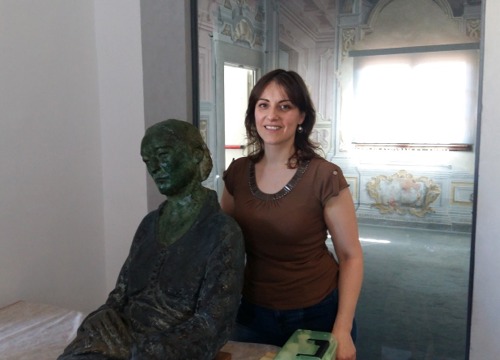Antonietta Raphael Mafai’s Mrs. Della Ragione, 1959
Antonietta Raphael Mafai. The story behind the sculpture. “The 1930s was a harsh decade for Raphael Mafai, as the anti-Semitic media pushed for the creation of a 'Pure Race'. She had seen her name printed in a list of 'artists to ban', because 'degenerated' Jewish art had to be abolished and its creators excluded from the right to exhibit. It was June 1939 when Mussolini's Racial Law 29 turned this propaganda into law. Not long afterwards, Jewish children would be denied the right to school registration, which forced Raphael’s three daughters (as non-baptized children of a mixed marriage) to recognize their Jewish status before the state. The family fled to Genoa. Mafai's daughter Miram recounts living as guests of intellectual Alberto della Ragione, in a villa 'presided over' by the art collector's mother where the family stayed 'in hiding' until the end of the war. It was there that Mafai would produce some of the most significant sculptures of her career. The artist’s Florence statue to Mrs. della Ragione tributes this time by commemorating her benefactor.”
Quote from Rust and Redemption by Jane Fortune, The Florentine
Quote from Rust and Redemption by Jane Fortune, The Florentine
Mrs. Della Ragione gets TV ready
‘Monuments Women’ film crew captures Raphael Mafai restoration for the small screen.
What the artist wants
Conservator Merj Nesi zeros in on the artist’s intentions before her museum debut.









